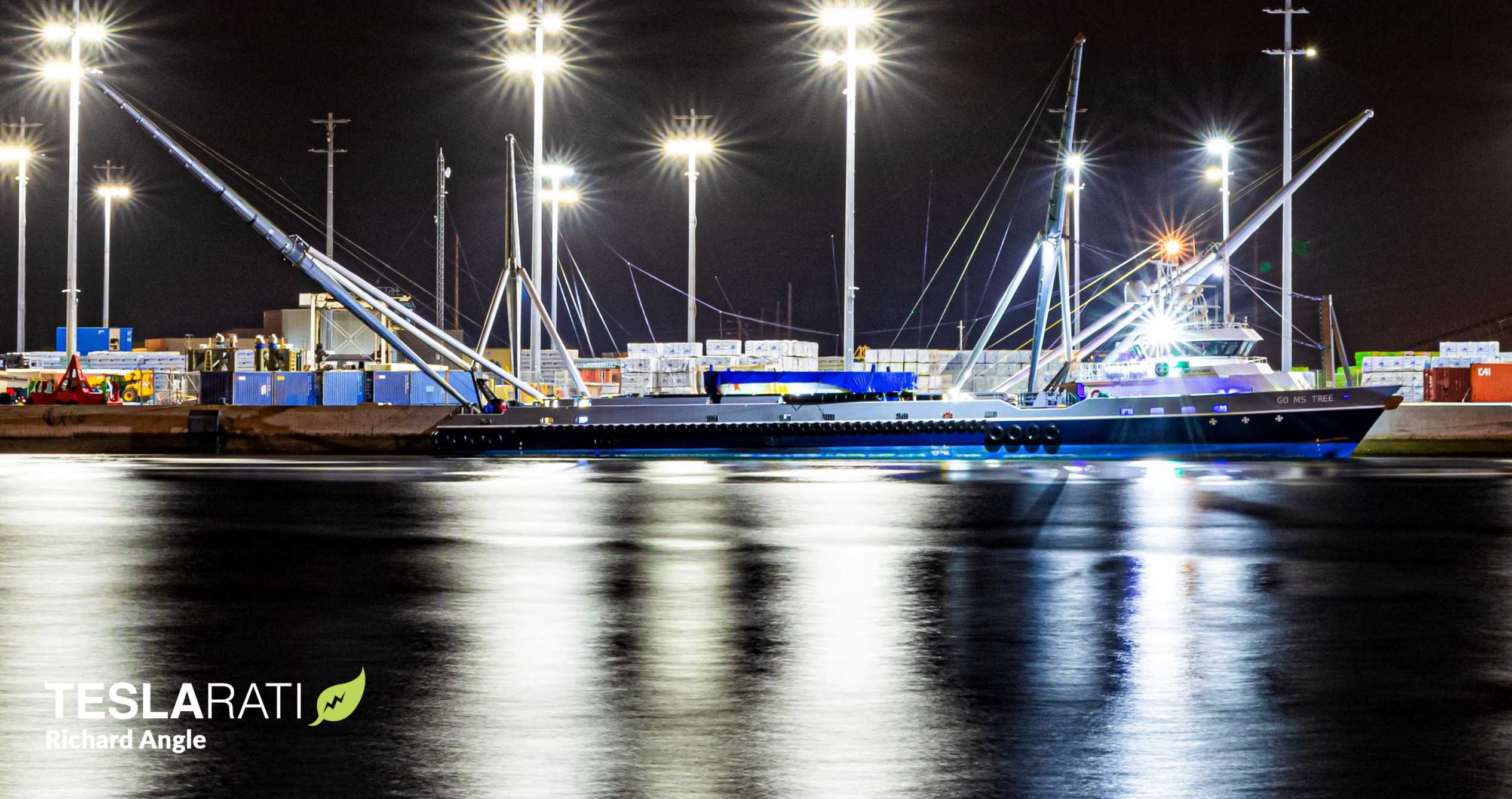

News
SpaceX rocket nosecone catch years in the making caught on camera
In a milestone more than three years in the making, SpaceX has successfully caught both halves of a Falcon 9 rocket’s payload fairing (i.e. nosecone) and shared videos of the historic feat.
Meanwhile, twin ships GO Ms. Tree and GO Ms. Chief returned to Port Canaveral before dawn on July 22nd with their trophies safely in hand. After years of development, at least a dozen failed catch attempts, numerous soft ocean landings, and the introduction of a second identical recovery ship, SpaceX has finally proven that a full rocket fairing can be recovered for (relatively) easy reuse.
Ironically, just eight months ago, SpaceX reused an orbital-class payload fairing for the first time, proving that fairings can be recovered and reused even if they fail to land in a recovery ship’s net. As such, the milestone is slightly less monumental than it otherwise could have been – but that’s not a bad thing, in this case. Most importantly, the successful catch of both halves of a Falcon fairing serves as a reminder of SpaceX’s extraordinary tenacity in the face of repeated failures and the reality that – given enough time and resources – the company almost invariably achieves its goals.

In the scope of orbital-class rocket recovery and reusability, payload fairings – nosecones that protect payloads from the atmosphere and environment and deploy several minutes after launch – rarely register. Relative to launch vehicle stages, the fairing typically represents a small fraction of the overall rocket’s cost. However, when built almost entirely out of carbon fiber composites to save as much weight as possible, they can require an outsized amount of labor and production time. At the same time, for a company like SpaceX that has already effectively solved the problem of routine booster recovery and reuse, a part that may have once represented a small fraction of launch costs can quickly become a major portion.
For Falcon 9, with the booster representing something like 65% of the rocket’s material cost, the payload fairing’s share of overall launch cost with a reused booster can quickly balloon from 10% to ~30%. Of course, those savings really only register from an internal perspective, which is precisely way SpaceX has continued to invest in fairing reuse after years with minimal success. Cutting ~30% off the material cost of the dozens to hundreds of Starlink launches planned over the next several years could easily save SpaceX hundreds of millions of dollars.

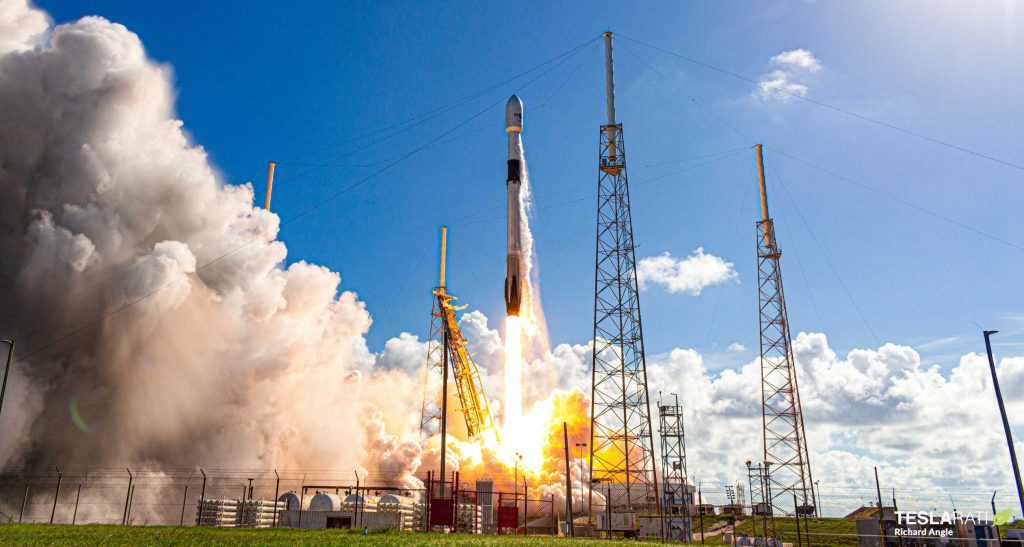
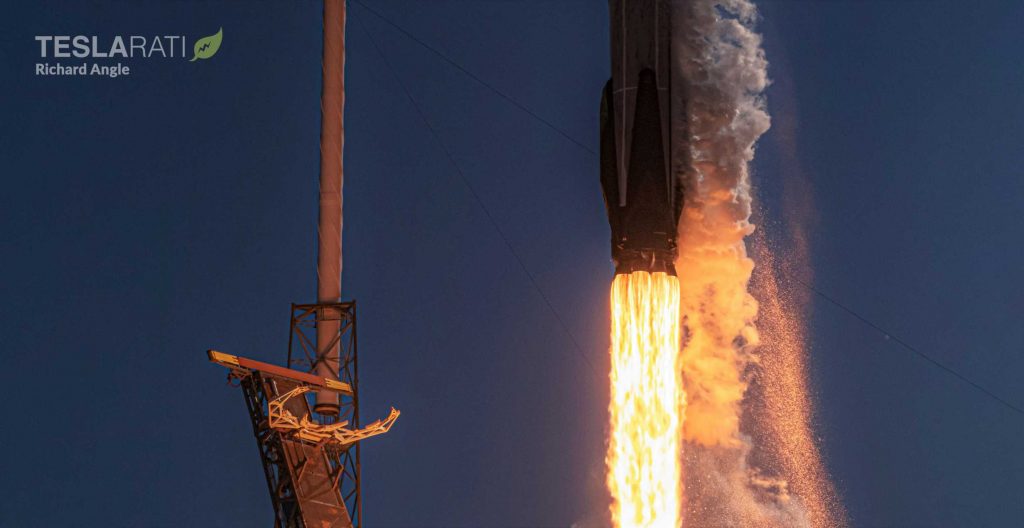
As such, SpaceX continues to reap the benefits of a healthy, industry-leading commercial launch business, more or less allowing it to pay for the production of rockets and facilities by launching a few commercial missions before moving on to many, many more Starlink launches. Up to now, only Falcon boosters have been able to take advantage of that unique opportunity, but SpaceX has very recently begun to reuse payload fairings – also frequently debuting on commercial missions. As of July 23rd, SpaceX has reused Falcon 9 and Falcon Heavy fairings three times, all on Starlink satellite launches.
On July 20th, Falcon 9 booster B1058 lifted off for the second time after a record-breaking turnaround, carrying South Korea’s ANASIS II military communications satellite and a fresh payload fairing atop a new upper stage. Simultaneously breaking a drought of fairing catches, GO Ms. Tree and GO Ms. Chief successfully caught both halves of said payload fairing in their respective nets for the first time ever. Protected from saltwater immersion that can easily corrode the aluminum both inside and outside the fairings, the successful catch all but guarantees that SpaceX will be able to quickly and easily reuse this fairing on a future Starlink mission.
Two simultaneously successful catches after 12 attempts – three successful – in ~30 months is either an extraordinary fluke or a sign that SpaceX may have solved fairing recovery after years of hard work and iterative improvement. SpaceX’s next firm launch is scheduled no earlier than July 30th and another Starlink mission could potentially happen between now and then, so the company should have several attempts to test its fairing recovery luck in the near future.
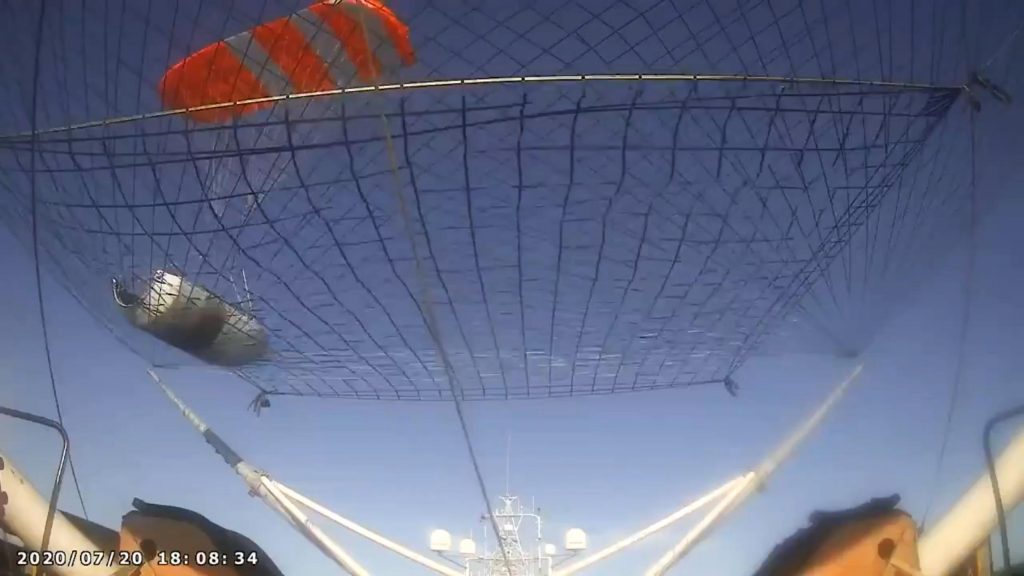
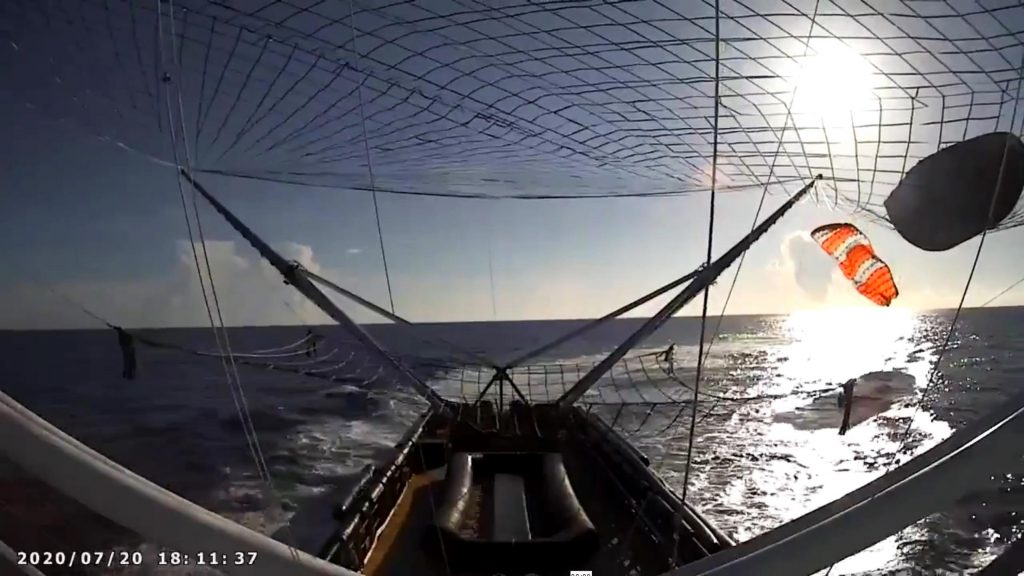
Check out Teslarati’s Marketplace! We offer Tesla accessories, including for the Tesla Cybertruck and Tesla Model 3.

Elon Musk
Elon Musk and Tesla AI Director share insights after empty driver seat Robotaxi rides
The executives’ unoccupied tests hint at the rapid progress of Tesla’s unsupervised Robotaxi efforts.

Tesla CEO Elon Musk and AI Director Ashok Elluswamy celebrated Christmas Eve by sharing personal experiences with Robotaxi vehicles that had no safety monitor or occupant in the driver’s seat. Musk described the system’s “perfect driving” around Austin, while Elluswamy posted video from the back seat, calling it “an amazing experience.”
The executives’ unoccupied tests hint at the rapid progress of Tesla’s unsupervised Robotaxi efforts.
Elon and Ashok’s firsthand Robotaxi insights
Prior to Musk and the Tesla AI Director’s posts, sightings of unmanned Teslas navigating public roads were widely shared on social media. One such vehicle was spotted in Austin, Texas, which Elon Musk acknowleged by stating that “Testing is underway with no occupants in the car.”
Based on his Christmas Eve post, Musk seemed to have tested an unmanned Tesla himself. “A Tesla with no safety monitor in the car and me sitting in the passenger seat took me all around Austin on Sunday with perfect driving,” Musk wrote in his post.
Elluswamy responded with a 2-minute video showing himself in the rear of an unmanned Tesla. The video featured the vehicle’s empty front seats, as well as its smooth handling through real-world traffic. He captioned his video with the words, “It’s an amazing experience!”
Towards Unsupervised operations
During an xAI Hackathon earlier this month, Elon Musk mentioned that Tesla owed be removing Safety Monitors from its Robotaxis in Austin in just three weeks. “Unsupervised is pretty much solved at this point. So there will be Tesla Robotaxis operating in Austin with no one in them. Not even anyone in the passenger seat in about three weeks,” he said. Musk echoed similar estimates at the 2025 Annual Shareholder Meeting and the Q3 2025 earnings call.
Considering the insights that were posted Musk and Elluswamy, it does appear that Tesla is working hard towards operating its Robotaxis with no safety monitors. This is quite impressive considering that the service was launched just earlier this year.
Elon Musk
Starlink passes 9 million active customers just weeks after hitting 8 million
The milestone highlights the accelerating growth of Starlink, which has now been adding over 20,000 new users per day.

SpaceX’s Starlink satellite internet service has continued its rapid global expansion, surpassing 9 million active customers just weeks after crossing the 8 million mark.
The milestone highlights the accelerating growth of Starlink, which has now been adding over 20,000 new users per day.
9 million customers
In a post on X, SpaceX stated that Starlink now serves over 9 million active users across 155 countries, territories, and markets. The company reached 8 million customers in early November, meaning it added roughly 1 million subscribers in under seven weeks, or about 21,275 new users on average per day.
“Starlink is connecting more than 9M active customers with high-speed internet across 155 countries, territories, and many other markets,” Starlink wrote in a post on its official X account. SpaceX President Gwynne Shotwell also celebrated the milestone on X. “A huge thank you to all of our customers and congrats to the Starlink team for such an incredible product,” she wrote.
That growth rate reflects both rising demand for broadband in underserved regions and Starlink’s expanding satellite constellation, which now includes more than 9,000 low-Earth-orbit satellites designed to deliver high-speed, low-latency internet worldwide.
Starlink’s momentum
Starlink’s momentum has been building up. SpaceX reported 4.6 million Starlink customers in December 2024, followed by 7 million by August 2025, and 8 million customers in November. Independent data also suggests Starlink usage is rising sharply, with Cloudflare reporting that global web traffic from Starlink users more than doubled in 2025, as noted in an Insider report.
Starlink’s momentum is increasingly tied to SpaceX’s broader financial outlook. Elon Musk has said the satellite network is “by far” the company’s largest revenue driver, and reports suggest SpaceX may be positioning itself for an initial public offering as soon as next year, with valuations estimated as high as $1.5 trillion. Musk has also suggested in the past that Starlink could have its own IPO in the future.
News
NVIDIA Director of Robotics: Tesla FSD v14 is the first AI to pass the “Physical Turing Test”
After testing FSD v14, Fan stated that his experience with FSD felt magical at first, but it soon started to feel like a routine.

NVIDIA Director of Robotics Jim Fan has praised Tesla’s Full Self-Driving (Supervised) v14 as the first AI to pass what he described as a “Physical Turing Test.”
After testing FSD v14, Fan stated that his experience with FSD felt magical at first, but it soon started to feel like a routine. And just like smartphones today, removing it now would “actively hurt.”
Jim Fan’s hands-on FSD v14 impressions
Fan, a leading researcher in embodied AI who is currently solving Physical AI at NVIDIA and spearheading the company’s Project GR00T initiative, noted that he actually was late to the Tesla game. He was, however, one of the first to try out FSD v14.
“I was very late to own a Tesla but among the earliest to try out FSD v14. It’s perhaps the first time I experience an AI that passes the Physical Turing Test: after a long day at work, you press a button, lay back, and couldn’t tell if a neural net or a human drove you home,” Fan wrote in a post on X.
Fan added: “Despite knowing exactly how robot learning works, I still find it magical watching the steering wheel turn by itself. First it feels surreal, next it becomes routine. Then, like the smartphone, taking it away actively hurts. This is how humanity gets rewired and glued to god-like technologies.”
The Physical Turing Test
The original Turing Test was conceived by Alan Turing in 1950, and it was aimed at determining if a machine could exhibit behavior that is equivalent to or indistinguishable from a human. By focusing on text-based conversations, the original Turing Test set a high bar for natural language processing and machine learning.
This test has been passed by today’s large language models. However, the capability to converse in a humanlike manner is a completely different challenge from performing real-world problem-solving or physical interactions. Thus, Fan introduced the Physical Turing Test, which challenges AI systems to demonstrate intelligence through physical actions.
Based on Fan’s comments, Tesla has demonstrated these intelligent physical actions with FSD v14. Elon Musk agreed with the NVIDIA executive, stating in a post on X that with FSD v14, “you can sense the sentience maturing.” Musk also praised Tesla AI, calling it the best “real-world AI” today.








